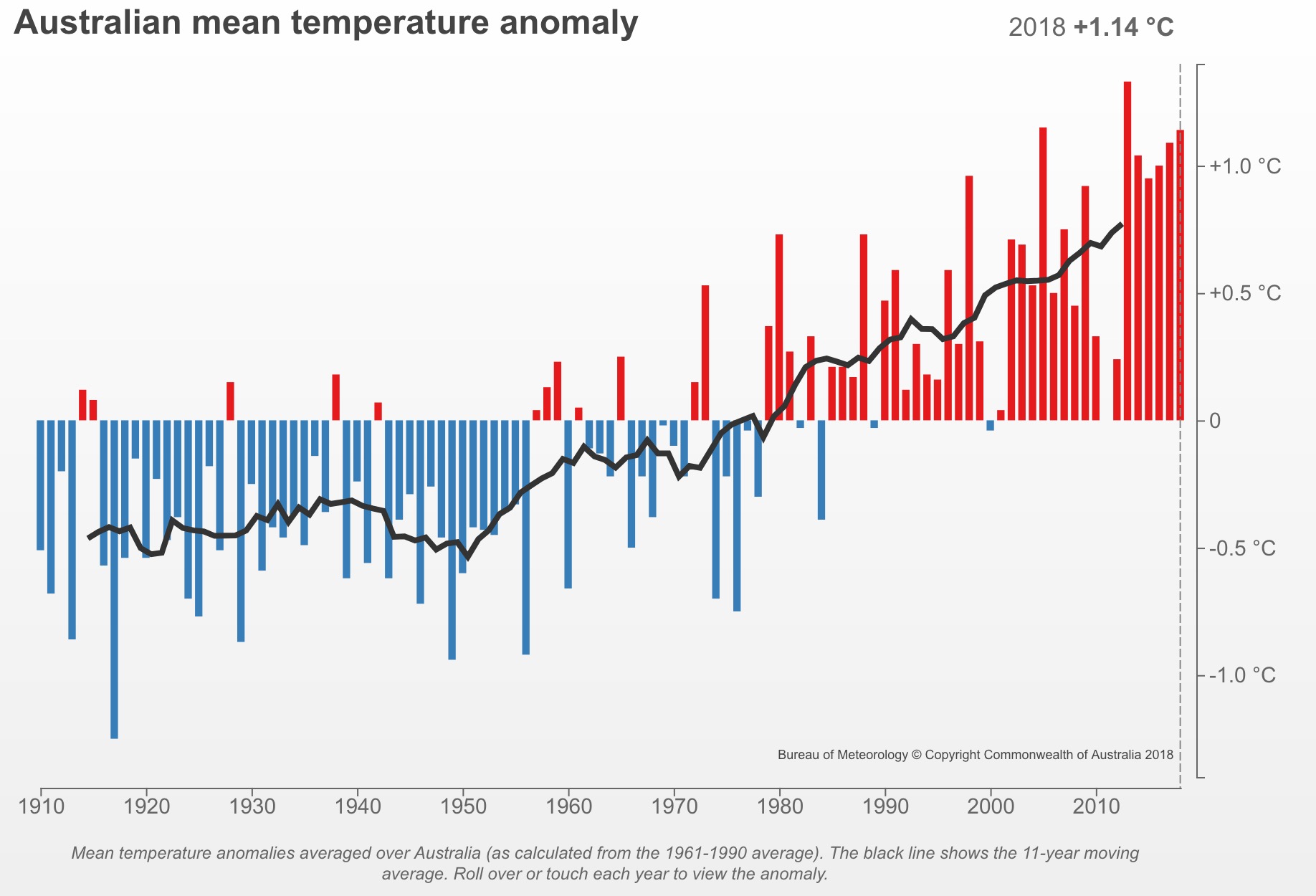The science is in. Again.
By Dimitris Dimoliatis & Mike Ritchie, MRA Consulting Group
CSIRO and BOM released the 2018 report on Australia’s climate (State of the Climate 2018 and Annual climate statement 2018 respectively).
The findings confirmed what the scientific community has been talking about over the last decade. There is a continued warming of the climate and oceans: “Observations and climate modelling paint a consistent picture of ongoing, long‑term climate change interacting with underlying natural variability.”
Some key facts presented in the report that stuck out for us are:
- 2018 was 1.14°C warmer than the 1961-1990 average- as were most years from 1979 onwards (see figure below);
- Since 1910, Australia’s climate has warmed by just over 1°C;
- Since 1910, sea surface temperatures in the oceans surrounding Australia have increased by around 1°C;
- Eight of the 10 warmest years on record in Australia occurred since 2005;
- CO2 levels in the atmosphere have been steadily increasing, with levels now consistently above 400 parts per million since 2016;
- CO2 levels have increased by 46% since pre-industrial times (~ 1750), and are likely the highest they’ve been in at least the past two million years;
- In 17 of the past 20 years, April to October rainfall in southern Australia has been below average; and
- Since the 1970s, streamflow has decreased across southern Australia.

The effect of these climatic facts have actually been felt first-hand by millions of Australian’s in 2018. Be it fish kills, drought, flooding; intense bush fires, worsening coral bleaching and loss of agricultural capacity. Considering the nixing of every climate policy, including the weak National Energy Guarantee and listening to some of the politicians you’d think that changes to our climate do not impact Australians.
But, irrespective of what anyone thinks (or wishes), more heat does lead to an increase in extreme fire weather and the lengthening of the fire season. And declining rainfall in the southwest and southeast does affect our food supply and our farmers’ livelihoods. What’s more, according to all projections things are expected to get worse.
These are real issues requiring real solutions from credible politicians and decision-makers. At present tackling the underlying effects of climate related catastrophes is an afterthought at best and an opportunity for political power struggles at worst.
The government has to review the science, identify the country’s needs and plan for the future accordingly. And level headed politicians from all parties should support these plans based on science and science alone.
As always, we welcome your feedback on this, or any other topic on ‘The Tipping Point’.



